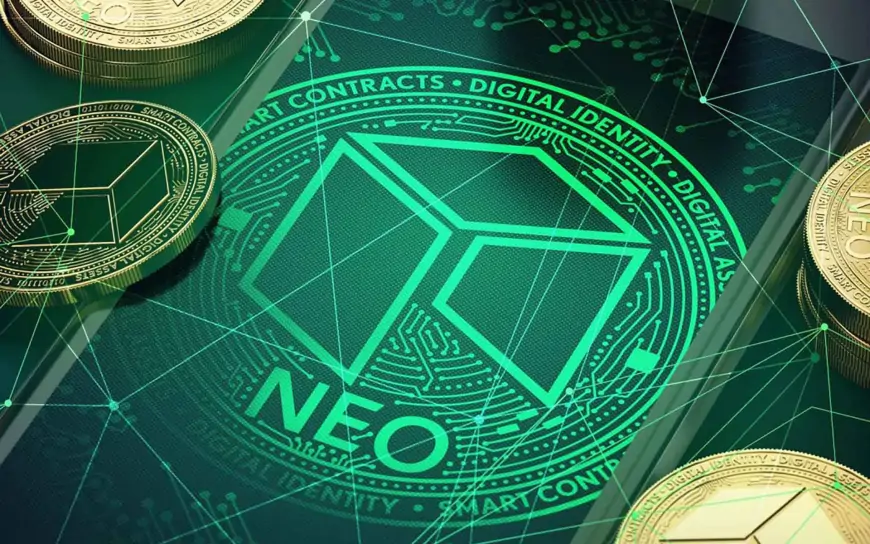What is NEO and how is it used? All you need to know
NEO is a blockchain platform and cryptocurrency designed to build a scalable network of decentralized applications. It is used for creating smart contracts and launching initial coin offerings (ICOs), among other functionalities.

What is NEO?
NEO is a blockchain created to digitize assets and identities using smart contracts, aiming to drive the growth of a smart economy. In this concept, digital assets and identities are fundamental to enhancing overall quality of life. NEO's objective is to automate the management of digital assets through smart contracts, ultimately establishing a distributed, network-based smart economy system built on decentralized applications.
Understanding NEO
NEO, initially known as AntShares, was established by Da Hongfei and Erik Zhang in 2014. The rebranding to NEO occurred in June 2017. This blockchain platform supports two primary tokens, NEO and NEO Gas. NEO's blockchain is crafted to digitize assets and identities, employing smart contracts to monitor and transfer ownership, thereby fostering what is termed a "smart economy."
Digital assets
Digital assets encompass both digital and physical assets that are tokenized by transferring their value to the blockchain and issuing a token for each asset. Tokenization provides a decentralized, trustworthy, traceable, and transparent method for managing assets, eliminating the need for intermediaries and their associated costs.
Users can record, purchase, sell, exchange, or circulate a variety of assets. NEO developers assert that this digitization enhances asset protection since assets are registered on its platform, providing them with a verified digital identity.
Digital identity
Digital identity refers to verifiable key information about individuals, organizations, and entities in the digital realm. Developers emphasize the importance of securing individual information using blockchain, consensus mechanisms, and encryption methods, particularly as digital aspects of life become increasingly prevalent.
NEO follows the Public Key Infrastructure standard (X.509) to manage identities, generating encrypted private and public keys for verifying identities. Digital identities can be authenticated using facial recognition, fingerprints, voice, SMS, and multi-factor authentication methods.
Smart contracts
Smart contracts are pieces of code that autonomously execute transactions and agreements between parties. By removing the need for third-party intermediaries, smart contracts enable automatic completion of transfers. They also ensure traceability, transparency, and irreversible transactions.
What sets Neo apart from Bitcoin and Ethereum?
NEO stands out from conventional blockchain platforms by prioritizing regulatory compliance and serving as a development platform for decentralized applications. Additionally, it employs a distinct consensus mechanism called delegated Byzantine Fault Tolerance (dBFT), setting it apart from Bitcoin and Ethereum.
Delegated Byzantine Fault Tolerance (dBFT)
Instead of relying on a competitive process like proof-of-work, where random numbers are generated to create a new block, Delegated Byzantine Fault Tolerance (dBFT) selects nodes for consensus rounds using a "staking" method akin to proof-of-stake. This approach aims to achieve a majority agreement of more than two-thirds.
To tackle the problem of unreliable validators, known as the Byzantine General Problem, consensus nodes with staked NEO Gas are randomly selected for consensus rounds to validate transactions and create new blocks.
Bitcoin
Bitcoin was designed as a decentralized digital currency and employs proof-of-work in its consensus mechanism. It features a single cryptocurrency that serves as a reward for mining, which involves validating transactions and creating new blocks on the chain. In contrast, the NEO network relies less on computational power for validation, resulting in lower transaction costs and faster processing times.
Ethereum
While Ethereum is known for its digitized assets and smart contracts, NEO sets itself apart with its emphasis on "digital identity," a key feature that requires every participant on the platform to have a unique and verifiable digital identity. This process involves providing unique information to receive a public key, which reduces the anonymity found in other blockchains.
Ethereum is designed to be scalable for various applications, including new currencies, non-fungible tokens (NFTs), decentralized applications (dApps), and even innovations not yet conceived. In contrast, NEO is specifically focused on enabling what it terms a "smart economy."
Is NEO a good crypto?
Whether NEO is a favorable cryptocurrency choice depends on your risk tolerance, outlook on cryptocurrencies, and intended use. Its value may rise or fall, as it is designed for tracking and transferring asset ownership while also having a market value.
How many NEO coins remain available?
50 million coins were distributed to project backers, with 15 million reserved for contingencies. Additionally, 20 million coins are allocated for developer incentives and 15 million for cross-investments in other projects. There are no plans to issue additional coins, but NEO is traded on various exchanges.
In summary, NEO is a blockchain platform with the goal of establishing a smart economy. It aims to achieve this by digitizing assets and identities, as well as enabling interoperability between different blockchains.












































